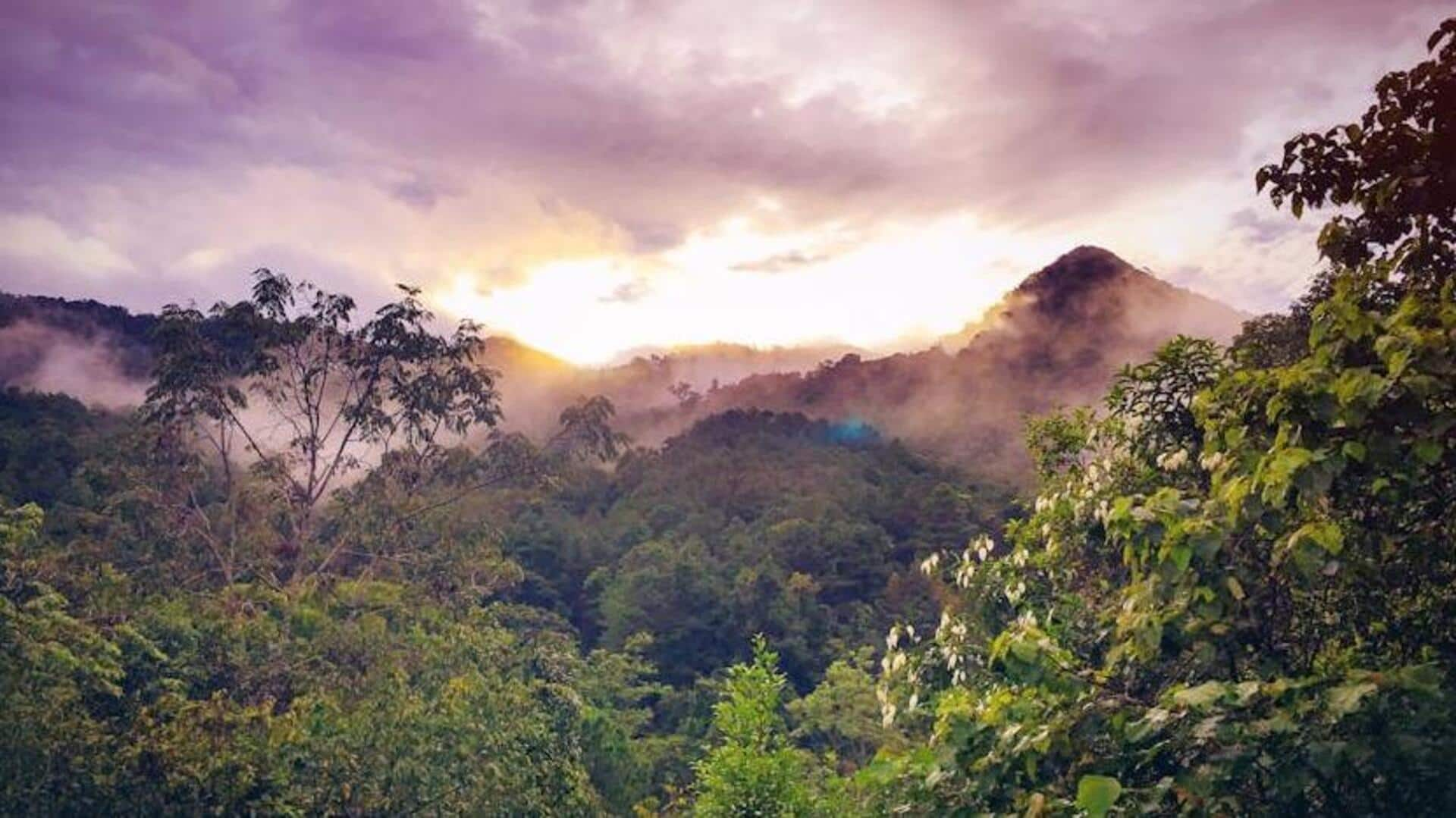
Soar above the Amazon Rainforest, Brazil: Activities to do
What's the story
The Amazon Rainforest in Brazil offers an unparalleled adventure for nature lovers and thrill-seekers alike.
Treetop walking, a unique way to explore this biodiverse haven, allows visitors to experience the forest from an entirely new perspective.
Elevated walkways and suspension bridges connect the canopy of towering trees, providing a bird's-eye view of one of the planet's most vital ecosystems.
Treetop walk
Experience the canopy firsthand
Embarking on a treetop walk in the Amazon offers a unique perspective.
Guided tours elevate you into the canopy, across suspended bridges and platforms attached to towering trees.
This vantage point reveals wildlife often unseen from the ground, like exotic birds, monkeys and sloths.
The experience is thrilling yet educational, shedding light on crucial rainforest conservation efforts.
Canopy research stations
Discover hidden ecosystems
Some treetop walks are connected to canopy research stations. These are places where scientists study the rainforest's flora and fauna.
Visitors have a unique chance to learn about ongoing research projects directly from experts in ecology and conservation.
It's not just a walk; it's an immersive learning experience that highlights the importance of preserving these environments for future generations.
Photography points
Capture breathtaking views
Strategically placed lookout points along treetop walks offer breathtaking panoramic views of the Amazon Rainforest.
These spots are perfect for capturing photographs that encapsulate the beauty and vastness of this natural wonder.
Early morning or late afternoon visits provide soft lighting conditions ideal for photography enthusiasts looking to capture stunning landscape shots or vibrant sunsets through the canopy.
Cultural exchange
Engage with local communities
Treetop walks in the Amazon, managed by local communities, offer more than adventure. They support local economies and foster sustainable tourism.
These tours allow visitors to engage with community members, understanding their traditions and lifestyle.
It's an opportunity to see how they live with the rainforest, promoting a deeper appreciation for biodiversity, conservation, and cultural heritage in this unique ecosystem.